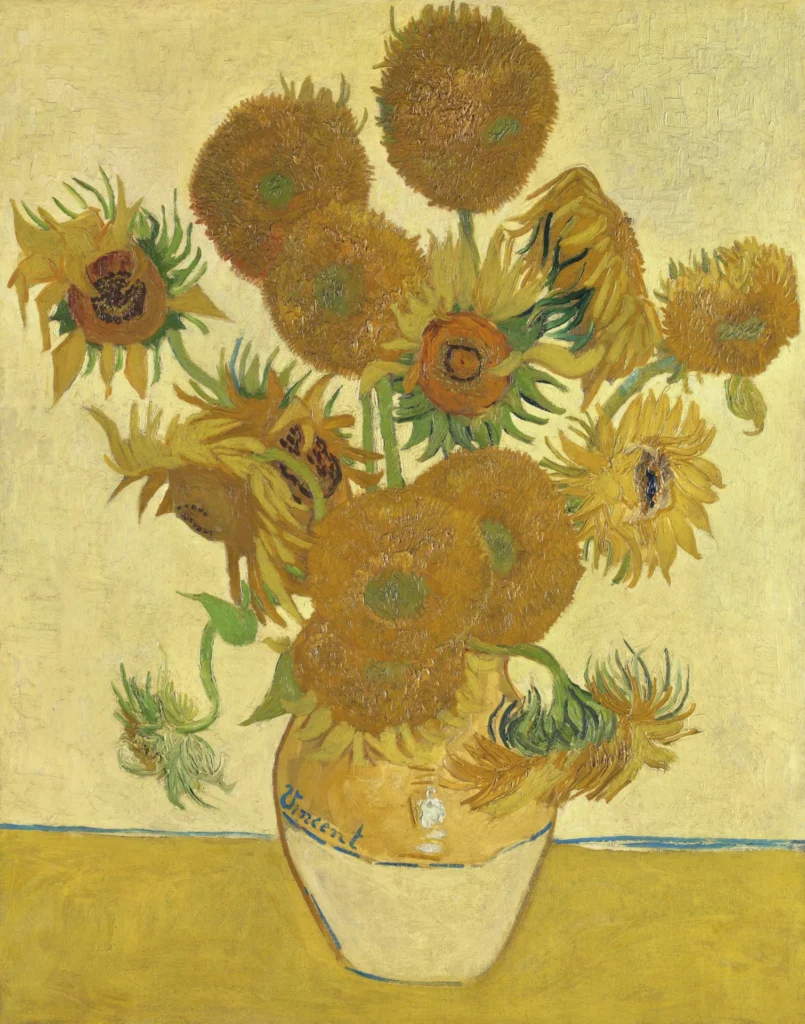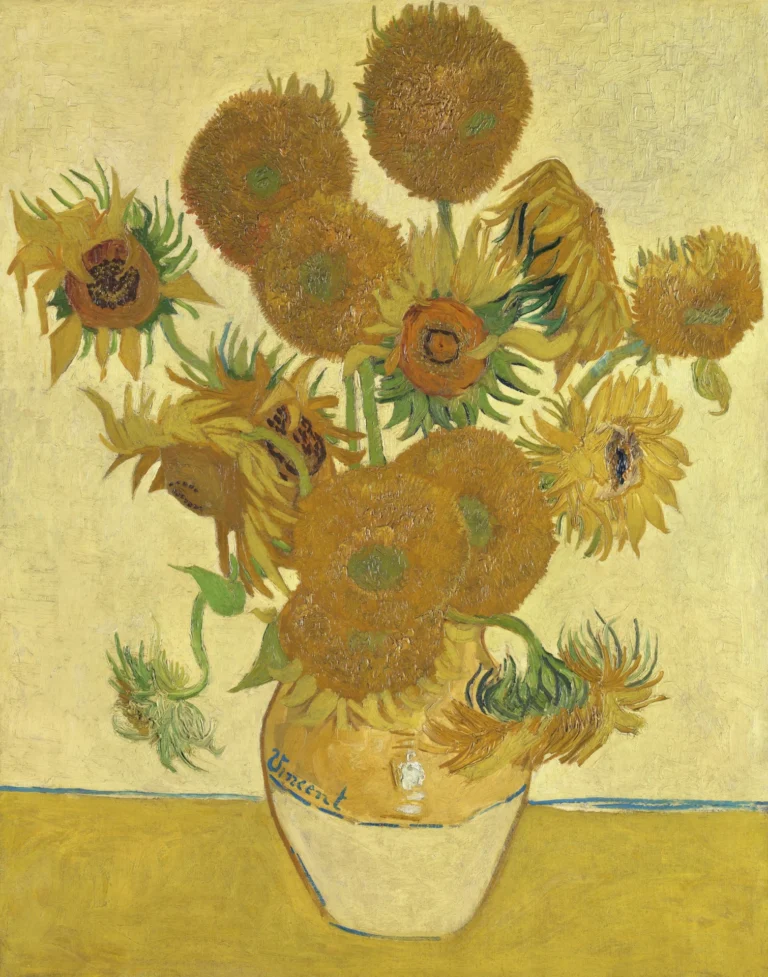Sunflowers (1888)
Sunflowers is an iconic celebration of life, painted by Van Gogh to capture the beauty in simple things. With bold, vibrant yellows and deep greens, Van Gogh’s brushwork breathes life into each petal and stem, creating a unique still-life masterpiece. This painting series was intended to welcome his friend Paul Gauguin to Arles, showing Van Gogh’s warmth and dedication to friendship. It’s a captivating reminder of the artist’s ability to find wonder in nature, using only sunflowers to express joy, warmth, and the passing of time.
1888-1889
About the Artwork
In the summer of 1888, Van Gogh painted his famous Sunflowers series in Arles, intending them as a cheerful decoration for his home. These sunflowers were meant to adorn the guest room of his friend, Paul Gauguin, whom he hoped to impress with his creativity. Each brushstroke captures Van Gogh’s enthusiasm for color and texture, and the bright yellows reflect his desire for a shared artistic journey.
However, the story of the Sunflowers was far from serene. Despite Van Gogh’s intentions, his friendship with Gauguin became strained, leading to intense conflict and Van Gogh’s own mental health struggles. The sunflowers, which started as symbols of hope, came to reflect the artist’s complex emotions. Though Gauguin eventually left, Van Gogh’s Sunflowers remained as powerful symbols of friendship, resilience, and the fleeting beauty of nature. Over the years, the paintings have become cherished masterpieces, symbolizing Van Gogh’s enduring spirit and his fascination with the vibrant beauty in ordinary subjects.










